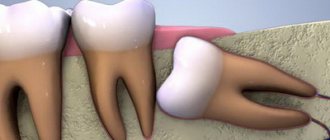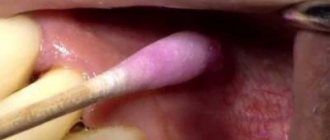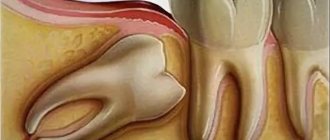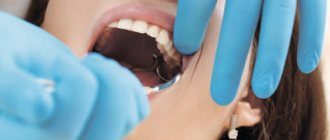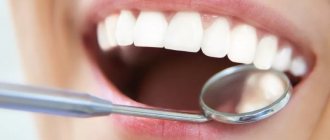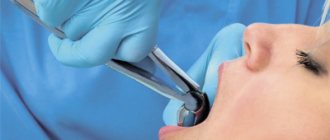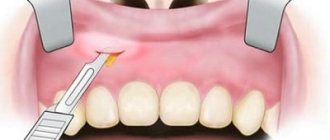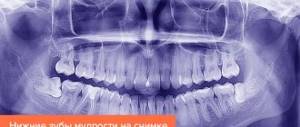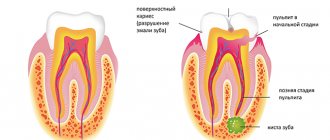The thought of having to go to the dentist and have a bad tooth removed causes panic in many people. Everyone knows that modern anesthetics completely relieve pain; the patient feels nothing except an unpleasant crunching sensation. But terrible stories from friends about difficult cases and terrible pain are passed on from mouth to mouth and instill fear.
This attitude makes you put off visiting a doctor until the pain becomes unbearable and the hard tissue is half (or 90%) broken. In this case, it will be really difficult to remove the remains of a unit of dentition. Is it possible to do without the help of a surgeon? Is it possible to remove a tooth without pain at home?
Carrying out the procedure
The tooth extraction procedure is carried out using effective, modern painkillers, so, as a rule, there is no pain during the operation itself.
The operation begins immediately after the anesthesia takes effect. A scalpel is used to loosen the ligament supporting the tooth.
If the procedure was traumatic, or the edges of the wound are too wide, the dental surgeon may use self-absorbing sutures. But most often, the wound is simply closed with a gauze pad with a special hemostatic agent. To stop bleeding, you need to lightly but firmly press the tampon onto the wound with closed jaws. After 20 minutes, the gauze can be spat out.
Preparing for removal
The preparation process necessarily includes x-rays.
The critical stage when removing a wisdom tooth is the preparatory process; the possibility of developing complications and unpleasant consequences of the operation depends on the quality of its implementation.
Preparation time can take from one day to several weeks. Everything is determined by the condition of the tooth and the reason for its removal.
For minor problems, the operation is performed on the same day that the patient sees the doctor, but following important steps.
Preparation for the operation includes the following activities:
- visual inspection;
- a photograph of the desired area of the jaw (X-ray);
- medical history (excluding contraindications to the procedure and medications used);
- consultation regarding anesthesia;
- recommendations regarding the operation.
If no significant dental problems were found during the examination, then only the operation itself and the drugs used are discussed. If there is an inflammatory process, suppuration or neoplasm, the specialist will require an x-ray to determine the location of the focal zone and fragments of the wisdom tooth.
General anesthesia
The psycho-emotional background of the patient is of particular importance, to which an experienced doctor pays considerable attention. Any fear is based on the unknown, so a specialist carefully analyzes all stages of wisdom tooth removal.
The patient, having received all the answers to his questions, feels more confident. And if the support of relatives or close people joins this, then a positive attitude will be ensured. For those prone to panic attacks, anesthesia is recommended.
The essence of anesthesia is the effect on the body of special gases that do not pose a health hazard. The substances contained in the gas are present in the street air, but their concentration is increased to put the patient in the desired state.
Gum condition
Pain in the gums may occur after the anesthetic drug wears off, that is, after 3-4 hours. After the procedure, the patient is often worried about the return of painful sensations and the release of ichor (for 4–6 hours. After the operation, the wound looks quite scary, especially if a wisdom tooth was removed.
In the absence of pathology, the healing process occurs in several stages.
Should wisdom teeth be preserved?
We think yes.
Although wisdom teeth are not involved in the process of chewing food, they can still benefit a person. There must be clear medical indications for their removal. And now we will provide you with another proof of the benefits of your own teeth-eights. Our patient Kim is about 20 years old, she is from Korea and lives in Moscow, as her parents work at the Korean embassy. I contacted the German Implantology Center due to inflammation of tooth 4.6 – the lower right six. The tooth was destroyed
, an abscess developed. There was a temporary filling on the tooth (placed in another clinic):
Where a temporary filling was placed, she was told to remove the tooth. That's why Kim came to us with one simple goal - to atraumatically remove the six, which began to greatly bother and hurt her. After doing a CT scan and looking at the tooth, we offered her an option, which, upon hearing, Kim at first did not believe her ears. Our proposal was to remove the six and immediately in its place... transplant its lower right wisdom tooth! This is called autotransplantation surgery.
Day after the procedure
At the initial stage, the hole remaining in the place of the pulled out tooth is filled with a scarlet blood clot. It is not recommended to remove it, as it performs several functions:
- protects the wound from infections;
- eliminates bleeding from blood vessels;
- promotes the formation of new tissue that will fill the empty space.
To avoid breaking up the blood clot, it is recommended not to brush your teeth on the day of surgery. Smoking is accompanied by inhalation of smoke, which creates negative pressure in the oral cavity. This may help pull the clot out of the socket. It is not recommended to blow your nose or spit. Rinsing your mouth should also be avoided; you can simply put the solution in your mouth and hold it for a while without rinsing. Gentle rinsing can be indicated only in the presence of inflammatory and purulent processes.
Features of hole care
If you have successfully pulled out a tooth from a child or yourself, be sure to complete the job. The final stage is monitoring the condition of the wound and proper treatment of the gums.
How to proceed:
- Do not rinse your mouth too often: you will destroy the delicate blood clot that protects the wound from infection;
- a soda solution promotes healing of the hole: a teaspoon of ordinary soda per glass of boiled water is enough;
- Eat warm food, never hot food. Very cold drinks during the first week after mini-surgery are also harmful. Violation of the rule often provokes inflammation of the gums;
- Ketanov, Nise, Ketoral, Ibuprofen will help relieve discomfort in the socket and neighboring tissues. Follow the instructions, take a certain number of tablets during the day;
- eat pureed foods. Consistency – not sticky, without hard grains;
- if you smoke, be patient without cigarettes for as long as possible - tobacco smoke and harmful tars worsen the condition of the wound surface;
- do not touch the wound with your hands, do not taste the clot with your tongue;
- if redness, severe pain, or gray-brown mucus appears in the wound, contact your dentist for help;
- swelling of the gum tissue that does not subside for two to three days also requires specialist supervision.
Remember that non-permanent teeth can be easily pulled out without pain only in children. Home “operation” in adults is possible provided that the unit is very loose and there is no way to get to the doctor. Remove a tooth yourself only as a last resort.
If the root is tightly holding a canine, incisor or molar, do not under any circumstances attempt a risky procedure. Without proper pain relief and the use of medical instruments, the process will turn into torture, and the risk of infection and severe blood loss will increase.
After three days
The blood clot begins to change and thicken. Gray and white fibrin stripes appear on it, after which the formation of new gum tissue begins. Painful sensations may still occur. But they are much weaker and have a pulling character. The patient may experience bad breath. This is considered normal and is due to the formation of a blood clot. Failure to brush your teeth also leads to the formation of bacteria and an unpleasant odor.
To rinse the mouth, you must use special solutions recommended by your doctor. The appearance of pain from touching the gums, increased pain during eating, serves as a signal for the need to return to the dentist's office. If the tissue of the edges of the hole has acquired a red tint, you should also immediately consult a specialist.
After 2–3 months and beyond
The gum gradually hardens, and the space remaining from the tooth is filled with maturing bone tissue. By the beginning of the 4th month, the gum bone tissue completes its formation. The gum can be called completely healed.
If the wound heals with suppuration, then healing of the wound can last up to six months.
Wisdom tooth transplant as a way to replace a defect
Of course, Kim was very surprised, but we showed her photographs of successful operations (and we have all of them successful), apparently our persuasiveness and the patient’s desire played a positive role in making the decision to transplant the eighth tooth. She was happy and agreed to the operation.
Moreover, in this case we did not even have to make a stereolithographic model of the tooth, since all surgical procedures (extraction and transplantation) were performed on the very first day of her visit to our clinic.
Dental transplant surgeries typically require several days of preparation, as we describe in the following clinical case study. But in this case, taking into account the current clinical situation and relying on our many years of successful experience in tooth transplantation, we were able to transplant tooth 8 into the place of tooth 6 as quickly as possible. We had all the indications for current dental transplantation.
The donor was an impacted (completely hidden under the gum) wisdom tooth 48. In fact, as we joked, it was a neighbor tooth to the problematic six. That is, the tooth grew and grew for 20 years, waited in the wings, and that hour struck! Now this donor tooth is for another 30 years
at least he will live in a new place.
If you look at the sixth tooth from the side, you can see bluish, literally purple gums
:
This color of the gums is due to the developed inflammatory process. The patient developed destruction of bone tissue against the background of advanced periodontitis. There was a crack in the root of the sixth tooth.
Gum healing process
The speed of gum healing depends on several factors:
- individual characteristics of the patient’s immunity;
- the success of the operation;
- location of the extracted tooth.
If the tooth is in a hard-to-reach place, has crooked roots, or its crown has been significantly damaged, then the removal procedure becomes more complicated. During manipulation, the tooth may begin to crumble, leaving fragments in the gum. In this case, it is necessary to cut the gum tissue, detach it from the bone, remove the tooth in parts, and use a drill. These traumatic procedures prolong the period of gum healing after surgery.
Slight swelling of the gums is considered normal. The temperature may rise slightly (due to an immune reaction). The swelling usually subsides within three days.
Noticeable swelling of the gum is also observed after cutting it. This swelling goes away in about one week.
What to do is strictly prohibited
Common mistakes:
- using pliers. Pieces of hard tissue often break, get into the wound, and provoke inflammation;
- people try to get rid of a problematic part of the dentition by tying a thread to it, then to the door handle. A sharp jerk can break a tooth and injure the gums and lips with fragments;
- insufficient hand disinfection, use of non-sterile bandage or gauze, incorrect solution for treating gums before and after surgery.
This is why the removal of incisors, molars or fangs should be entrusted to a professional. In case of complications, the doctor will quickly find a way out, stop the bleeding or relieve pain shock. At home, a non-specialist cannot predict the situations that he will encounter during surgery.
Possible complications
Signs of alarm should be considered an enlargement of the cheek, further spread of swelling, a persistent increase in temperature, increased pain, nausea, and weakness. If the healing process is disrupted, the following complications may occur:
- Cyst formation. It is a fibrous neoplasm filled with fluid.
- Flux. Formed after infection penetrates into the socket and then into the periosteum. The resulting inflammation is characterized by severe swelling of the cheek on the side of the diseased gum. There is severe pain and redness of the gums. The formation of flux requires immediate medical attention. Therefore, it is necessary to carefully protect the site of the extracted tooth from possible infection.
- Alveolitis. This is a complication that occurs during the inflammatory process of the hole in the jaw bone. The infection occurs due to a violation of the integrity of the protective blood clot. The onset of the disease is characterized by inflammation of the outer layers of the socket, spreading into the deep layers of the bone. Alveolitis is accompanied by aching pain during eating, swelling and redness of the gums. There is a putrid odor from the mouth. The patient feels chills, headache, and fever. The occurrence of the disease most often occurs during the extraction of molars located on the lower jaw. It is necessary to obtain medical attention in a timely manner to avoid the spread of infection to other organs. One of the dangerous complications of the disease is osteomyelitis.
Removing wisdom teeth is a more complex procedure, so gum inflammation often occurs after surgery. At the same time, discoloration or swelling of the gums should not cause concern to the patient. Often after surgery there are difficulties opening and closing the mouth. This is a consequence of surgery. To get to a hard-to-reach place, the doctor asks the patient to open his mouth as wide as possible. The pressure exerted on the tissues leads to their swelling. On the 3rd day, the discomfort usually goes away completely. The appearance of purulent contents in the hole, increased temperature, acute pain, heavy bleeding - all these signs require immediate contact with the dentist.
When to remove a tooth
The main reasons when pulling out a unit of dentition is not just desirable, but mandatory:
- deep caries affecting a large volume of dental tissue. It is impossible to restore the volume of dentin and normalize chewing function;
- the tooth is broken due to mechanical impact (trauma, blow to the jaw area, fall, severe bruise). The surviving remains of hard tissue do not allow restoration of the unit;
- severe complications, the formation of zones filled with pus inside the cavity, in the periodontal tissue;
- the new, permanent unit cannot erupt due to the presence of the baby tooth.
Recommendations after tooth extraction
There are recommendations that, if followed, significantly speed up the gum healing process. Not only the speed of wound healing depends on them, but also the absence of possible complications. The doctor’s main recommendations in the postoperative period may be the following:
- you need to avoid foods that are too hot, spicy, or irritating to gum tissue;
- in the first days you need to carefully avoid damaging the clot; It is necessary to be extremely careful in maintaining oral hygiene;
- about 3 hours after the tooth extraction procedure you need to refrain from eating;
- in the next three days you need to eat only soft food, without consuming sweets, alcohol, or hot drinks;
- on the first day after the procedure, it is recommended to sleep on a high pillow;
- During the week, it is recommended to avoid visiting the sauna, solarium, sunbathing on the beach, and reduce physical activity;
- on the first day, it is forbidden to brush your teeth to avoid damaging the blood clot;
- Do not try to pick the clot with your finger, toothpick or tongue;
- a cold compress should be applied to the surgical area for 20 minutes, every 2 hours;
- It is recommended to use oral baths and then rinse with antiseptic agents.
The postoperative period requires careful attention to the patient's health status. A complication resulting from neglect of the rules will require much more time, money and effort to heal the wound.
How to remove baby teeth without pain
Many parents remember their fear of the dental chair and do not always take their children to the dentist on time. During the period of eruption of new units, the interdental spaces in the child increase, and the first teeth become loose. After five years, temporary units are replaced by permanent ones.
Often the tooth wobbles very much, parents decide to pull it out themselves so as not to have to go to the dentist again. It is much easier to remove a non-permanent incisor or fang than a molar: baby teeth have weak root primordia, and it is quite easy to remove one from the socket.
How to pull out a baby tooth at home? Step by step:
- Explain to the child in an accessible form, without unnecessary details, what you will do. Come up with a story about a magic tooth that needs to be taken out and hidden in a box so that a strong permanent unit grows in its place. Tell us that kids whose teeth change become older: children love to feel like adults;
- After psychological preparation, feed the child: after the procedure, you should not drink or eat for 2–3 hours;
- the next stage is thorough cleansing of the oral cavity with toothpaste, then rinsing with a special solution that disinfects hard and soft tissues. It’s easy to prepare the product: 1 tsp per glass of boiled water. salt, 2 drops of iodine;
- Check again how much the tooth swings. Act carefully so as not to scare your son or daughter. Take clean dental or silk floss and tie around the unit that is swinging;
- pull the thread sharply. Direct the movement in the direction opposite to the jaw;
- the operation takes 2–3 seconds, the child does not feel pain, but immediately after removing the tooth, distract your son or daughter and cheer him up. Afterwards, check the gums, see if any fragments have entered the wound, check the integrity of the pulled out tooth;
- moisten a sterile cotton swab with an antiseptic, apply it to the hole, ask the child to bite the tampon well. Remove the cotton wool only after half an hour. Be sure to check for heavy bleeding or a blood clot;
- show the little brave man what “gift” you have for the magic box;
- Wash the removed unit and place it in the chest with the child. If you haven't prepared a box, an ordinary saucer will do - you can make a “storage” later. Many people wait a long time to throw away milk units;
- After 3 hours, feed the child pureed food that does not injure the gums. Hot, very cold dishes and drinks are prohibited;
- During the hygienic procedure, tell your child that you should not rub the extraction site. At 5–7 years old, it is better to clean your child’s teeth yourself;
- the next day, carefully examine the hole and adjacent tissues. Most often, there are no complications, the wound heals quite quickly;
- If droplets of blood appear for a long time, redness and swelling appear, be sure to go to the dentist. Do not delay the visit for too long: if the wound becomes infected, the inflammation will quickly spread to other areas.
Take note:
